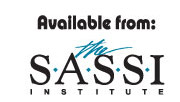 |
 |
Q. Can you get a ‘total score’ for the BADDS that will give you an estimate of risk?
A. The BADDS is comprised of 3 attitudes scales, 2 behavior scales, and other qualitative items. There is currently no way of adding these scale scores together to get a broader total score. Rather, clinicians should consider all of the scores as a whole in estimating someone’s drinking and driving risk.
Q. Can I just have someone complete parts of the BADDS and not the whole thing?
A. It is recommended that the entire BADDS be completed. However, in the case where clinicians purposefully have clients skip items, make sure that ALL the items within a scale are completed before scoring.
Q. Is the BADDS recommended for use with teens?
A. The BADDS is probably not appropriate for use with children who are not nearing the driving age. For teens who are of driving age but under 18, the BADDS can be used in a pre/post fashion to evaluate prevention programs, but should not be used with anyone under 18 when the results of the BADDS could have legal consequences (like sentencing recommendations).
Q. The items on the BADDS seem so obvious – can’t people ‘fake good’ on their responses?
A. Yes, people can respond in a socially desirable way, and this should always be considered as a possibility. The BADDS is comprised of items that have a rather high amount of face validity, although the items on the Lenient Attitudes subscale are somewhat more subtle. Research on the BADDS indicates that despite the questions’ face validity, the BADDS does a very good job of discriminating those with low, moderate, and high risk of future drinking and driving behavior. In our research people have typically been very willing to admit to very risky behavior.
Q. Why isn't there a scale on the BADDS to detect if people are attempting to "Fake Good?"
A. While some persons may attempt to 'fake good' on the BADDS, our research shows that even in circumstances where DUI offenders would be influenced to 'fake good' their responses on the BADDS continue to be 2-3 times higher than non-offenders.
Q. How can I find out about ongoing research using the BADDS?
A. You can send an email to research@thebadds.com to ask questions regarding research.
Q. How can I find out about discounted rates for researchers?
A. You can send an email to research@thebadds.com to ask questions regarding research.
Q. How is the BADDS different from other DUI instruments?
A. The BADDS was designed specifically to screen for risk of drinking and driving rather than as a general screening instrument for alcohol misuse or disorders. In addition it can be used in a pre and post format to measure intervention effectiveness. Research shows that the BADDS is highly sensitive to change. Therefore, the BADDS is useful both when it is used as a stand alone questionnaire for an initial evaluation and when measuring change.
Q. Is the BADDS cost effective?
A. At $1.50 per administration, the BADDS is well below market. Because the BADDS measures drinking and driving attitudes and behaviors as well as program effectiveness, the BADDS can meet a range of measurement needs for use in clinical, judicial, and treatment settings for decision-making and reporting at a modest cost.Q. In what setting can I use the BADDS?
A. There are multiple settings in which the BADDS can be used including:
* DUI Court programs including prevention, intervention, and treatment of impaired drivers
* DUI Probation departments
* Individual counseling
* Pre-release treatment planning in jails and prisons
* Universities and schools
* ResearchQ. When should I use the BADDS?
A. The BADDS can be used whenever you wish to assess risk of impaired driving and riding behaviors. The BADDS is also a reliable and valid tool to assess intervention effectiveness. When the BADDS is administered as a pretest, participants’ responses can help highlight areas to target in a course of instruction. When the instrument is also administered as a posttest at the end of a course of intervention, BADDS change scores can help identify areas of continued impaired driving risk and areas of successful change.
Q. Should I use the SASSI or the BADDS?
A. If your objective is to identify those who are likely to have a substance use disorder, screening instruments such as the adult, adolescent, and Spanish SASSI instruments can help you to this end. If your goal is to identify more specifically those who are likely to engage in impaired driving behaviors, or if your goal is to evaluate the effectiveness of an impaired driving intervention, the BADDS is a highly valuable tool.
